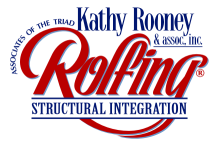FAQ
CAN ROLFING® HELP RELIEVE MY (KNEE, HIP, ANKLE, ELBOW, SHOULDER, ETC.) PAIN?
YES. Most of the joint pain people experience is in the connective tissue of the joint. A joint is actually the space between two bones encased in a soft tissue connector. Rolfing® addressess the connective tissue and can remediate the effects of old injuries. The chronic pain complaints you have about your body will be addressed within the basic series.
DO I HAVE TO GET 10 SESSIONS?
No. Please come in and try a session. If you are happy with the results you get, we would like you to commit to the next two sessions. By the end of your third session you will have a clear sense of whether or not the rest of the basic series is for you.
DOES ROLFING® LAST?
YES. Photographs show that the changes of the basic Rolfing® series are still present many years after the series is complete.
On the other hand, as bodies change, and people sometimes have injuries, accidents and stressful times, additional work is useful.
HOW DOES ROLFING® FEEL?
Sensations in the area being worked may range from pleasurable warmth to momentary discomfort. Two frequent comments made during Rolfing® sessions are, “It hurts, but it feels good at the same time” and, “I’ve been waiting for years for someone to do this”. At times there may be little sensation at all. The experience reported most often is one of lengthening; something is letting go.
How you will feel during Rolfing® depends on several factors such as injuries to the area or tension caused by chronic stress. At all times, you are in control of your experience by communicating with your Rolfer™ to maintain the applied pressure at an appropriate comfort level.
IS THERE SCIENTIFIC PROOF ABOUT ROLFING®?
Several scientific studies of Rolfing® have been conducted. For example, in a controlled study at the UCLA Department of Kinesiology, Drs. Valerie V. Hunt and Wayne W. Massey established that the aim of Rolfing ®, “to create and maintain a more balanced energy system which conserves energy rather than expends it,” was, in fact, achieved. They found that,
- Movements were smoother, larger and less constrained.
- There were less extraneous movements.
- Body movements were more dynamic and energetic.
- Carriage was more erect and there was less obvious strain to maintain held positions.
Other research projects include a study of Rolfing® and its positive effects on the autonomic nervous system published in Physical Therapy, the journal of the American Physical Therapy Association, March 1999 issue.
